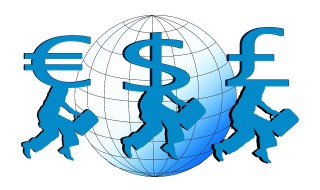
Singapore experiences its first deflation in 5 years when consumer prices fell 0.3% in November on a year-to-year basis. Deflation, in economics is defined the decrease in average price level of good and services.
While it may be good news to the consumers as their purchasing power increases with more money in their pocket for other things, investors and the government get cautious over a sustained decrease in the price level.
‘Decrease? I am still paying the same for my food, public transport and medical bills.’
Prices of food, healthcare and education amongst other items has in fact, avoided the drop and in fact rise by 2.9%, 1.8% and 2.7% respectively. For the average consumers, there is nothing to cheer about besides a drop of 2.1% in clothing and footwear.
What led to the overall fell in prices is mainly due to the fall in the price of private road transport – a decline of 7% as compared to last year. This is attributed to the decrease in the price of COE premiums from almost $100,000 in January 2013 to around $76,094 for Cat E in the first round of bidding in December 2014. With over 100,000 cars hitting 10 years old next year, these decade old cars is due for de-registration and thus expect an influx of COE supply and prices to fall further.
The fall in Brent crude oil from US$115 a barrel in June to the current price of US$61 a barrel has caused downward pressure to the average price level of good and services. With the advent of better technology such as hydraulic drilling in the US and the use of alternative fuel, coupled with a slow growth in China and OPEC’s price war, it is unlikely that prices will hit the US$100 mark in the near future.
The housing sector is also affected as the property and rental market start to slow down.
What does it means to the consumers?
If there is sustained deflation, there will be a downward deflationary spiral where aggregate demands will fall and companies to cut down on production. Consumers will put off spending knowing that future prices will be cheaper and this hurts the economy and increases unemployment. With lower wage, the problem exacerbates and price declines further – something you witness in Japan over two decades.
Fortunately, Singapore seems poised to be able to resist the deflationary pressure due to a tight labour market and increasing population. The fall in the general price level is unlikely to be passed on to the consumers as companies face high rental cost and sticky wages. So don’t expect the price of your groceries, MRT and Bus fares and other necessities to fall.
What about investors?
Investors should remain cautious if the prices of Brent continues to decline to inflection point. The slide will cause concerns for companies in the offshore and marine industry such as Sembcorp, Keppel and COSCO as profits dwindled with declining global demands.
The roubles crisis may further inject uncertainties to the market and may often lead to spillover effects on countries that are exposed to Russia such as the US, Germany and eastern Europe that relied heavily on Russian economy. For example, Germany’s company Siemens lost 14% of the revenue, Volkswagen has lost 20% in the same period and Adidas has shut down stores in Russia. American companies like McDonalds, FordMotors and ExxonMobil were also hurt by the fallout due to sanctions and decline in sales.
While there are mixed results from the falling prices, there is no cause of concern for Singapore, for now. Core inflation is expected to average between 2 to 3 per cent in 2015.




